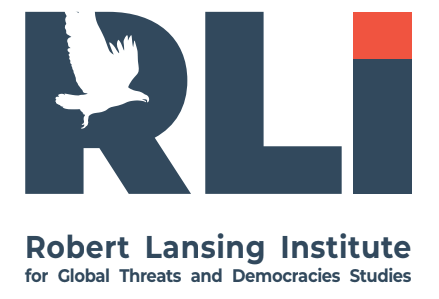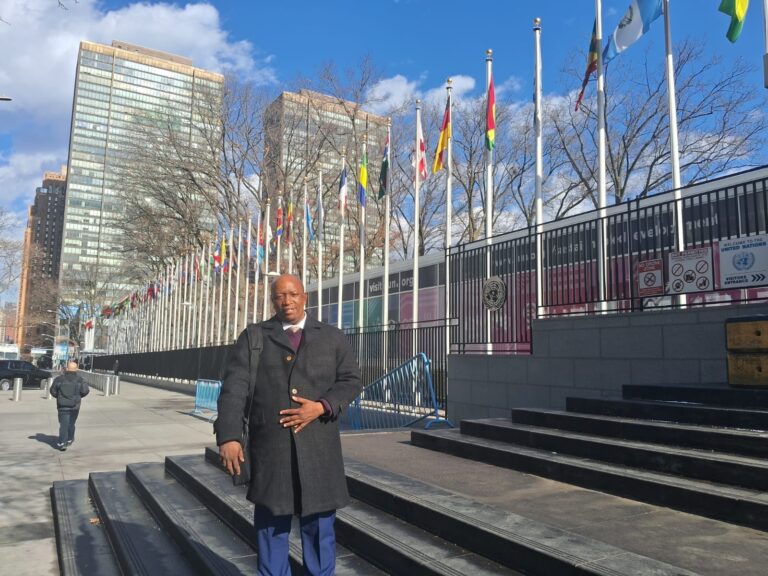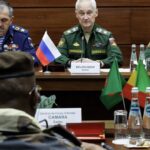- Lesotho’s top security officials have warned of a militant group called Malata Naha (“land reclaimers”) recruiting Basotho youth and training them on South African farms to foment insurrection or reclaim territory.
- South Africa’s Police Service (SAPS), including the Hawks (DPCI – Crimes Against the State), has investigated farms across provinces bordering Lesotho (Free State, Eastern Cape, Mpumalanga, Northern Cape, KwaZulu-Natal), but has found no evidence of camps or organized military training.
- Date: The group was first publicly identified on July 18, 2025, during an extraordinary press briefing in Maseru, Lesotho.
- By whom: This claim came from Lesotho’s Police Commissioner, Advocate Borotho Matsoso, joined by heads of the Lesotho Defence Force (LDF), Lesotho Mounted Police Service (LMPS), and other national security officials.
- They described a group calling itself “Malata Naha” (“land reclaimers” in Sesotho) allegedly recruiting Basotho youth for military-style training conducted on farms inside South Africa, under the pretext of reclaiming historically lost territory.
Who Brought It to Light and Context
- Security leadership in Lesotho, especially Commissioner Matsoso, publicly raised the alarm — framing Malata Naha as an insurgent threat targeting peace and regional relations.
- The group is allegedly supported by foreign interests and engaged in deception—according to these official statements.
- Notably, the emergence of this claim coincided with the arrest of MP Tšepo Lipholo, leader of the Basotho Covenant Movement, who advocates for reclaiming land historically belonging to Lesotho and was charged with sedition.
- Opposition figures—including MP Machesetsa Mofomobe—have dismissed the allegations as politically motivated, aimed at suppressing land-reform activism or dissent.
Summary
- First public mention: July 18, 2025, in Maseru, by Lesotho’s security chiefs led by Commissioner Matsoso.
- Crucial context: Occurred alongside heightened security rhetoric, the arrest of an MP advocating for land reclamation, and political contention around territory and national identity.
1. Who Are the Alleged Rebels — Real or Rhetorical?
- Malata Naha is presented as a Basotho youth movement with nationalist goals—claiming to reclaim land lost in colonial treaties (e.g., Treaty of Aliwal North in 1869).
- The movement appears linked, at least rhetorically, to political actors such as MP Tšepo Lipholo, leader of the Basotho Covenant Movement, who advocates for reclaiming historical Basotho land. He’s been arrested for sedition.
- The Political Oppositio in Lesotho suggests these security claims may be politically motivated attempts to suppress dissent or land-rights activism.
2. Plausibility: Could a Rebel Army Exist?
Why It Seems Unlikely
- No Physical Evidence: Thorough SAPS investigations have uncovered no proof of military-style training camps on South African farms.
- South Africa’s Border Terrain: Farms are unlikely covert training grounds given supervision and proximity to local communities; clandestine camp formation seems strategically unsound.
Remaining Possibility
- The scenario could involve small, decentralized groups disguised as community or land-protest gatherings—making detection difficult.
But the absence of verifiable evidence makes claims of a rebel army training in South Africa highly speculative at best.
3. Objectives & Motivations (If Real)
If Malata Naha is operating, motivations might include:
- Pressuring Lesotho’s government on territorial grievances over land ceded to South Africa during colonial treaties.
- Mobilizing marginalized Basotho youth through nationalist narratives.
- Possibly preparing for political destabilization, though this is currently unsubstantiated.
The term “Basotho movement” generally refers to socio-political and cultural currents tied to the Basotho people, an ethnic group native to Lesotho and surrounding areas in South Africa’s Free State, Eastern Cape, and Gauteng.
- Historically, some factions within Basotho society have advocated greater political autonomy, protection of traditional lands, or even reunification of territories lost to South Africa in the 19th century (notably the “lost territories” incorporated into South Africa after the Basotho–Boer conflicts).
2. Composition and Structure
- The Basotho movement is not monolithic — it includes:
- Cultural-nationalist groups focused on preserving Sesotho language, customs, and heritage.
- Political activists advocating either stronger sovereignty for Lesotho or a revision of its borders.
- Diaspora community organizations in South Africa representing Basotho migrant workers.
3. Key Goals and Narratives
- Cultural preservation — resisting erosion of Basotho traditions under South African dominance.
- Territorial claims — some nationalist rhetoric calls for reclaiming the Free State highlands, parts of KwaZulu-Natal, and Eastern Cape lands historically tied to the Basotho kingdom.
- Socioeconomic justice — improved labor rights for Basotho working in South African mines and farms.
- Political leverage — use of historical grievances to influence Lesotho’s domestic politics or South African–Lesotho negotiations.
4. Current Political Sensitivity
- South Africa views any militant offshoot of this movement — real or alleged — with caution, particularly after Lesotho’s recent claims about “illegal military training camps” on South African farms.
- While mainstream Basotho organizations operate legally and peacefully, small radical factions could, in theory, be exploited by political actors in Lesotho or criminal networks to destabilize the region.
5. Plausibility of Armed Factions
- Intelligence so far suggests no verified structured rebel army, but there may be informal groups of ex-soldiers, political dissidents, or criminal syndicates invoking Basotho nationalism for recruitment.
- Historically, the Basotho nationalist sentiment has been more political than militarized, but unresolved territorial and economic issues make it a potential rallying point.
4. Consequences and Implications
- Diplomatic Tension: If real, such camps would severely strain Lesotho–South Africa relations over sovereignty and border security.
- Internal Security: Claims of an insurgent force—even if false—could justify reprisals, surveillance crackdowns, or political repression inside Lesotho.
- Regional Alarm: Southern African bodies like SADC may intervene to prevent cross-border escalation.
5. Broader Context & Historical Echoes
- In the 1970s, the Lesotho Liberation Army (LLA) trained Basotho youths abroad (like Libya) and ran guerrilla activations—distinct from today’s claims but echoing past insurgent behaviors.
- The People’s Charter Movement publicly pushes for Lesotho’s reintegration with South Africa (federally or fully), signaling structural dissatisfaction, though not armed action.
Summary Table: Malata Naha Claims
| Factor | Assessment |
| Evidence of training | None found by South African investigations |
| Group’s identity | Not well-defined; possibly ideological/political movement |
| Claimed goals | Land reclamation; nationalist resistance |
| Likelihood of rebel army | Very low—more plausibly small, symbolic activism or misinformation |
| Potential impact | Political destabilization; diplomatic friction; internal suppression |
Distribution of the Basotho People: Overview
In Lesotho
- Virtually 100% Basotho: The nation of Lesotho is ethnically homogeneous—99.7% of its roughly 2.2 million people identify as Basotho
- Nationwide presence: Basotho inhabit all ten districts, with higher population density in western regions near cities like Maseru, Leribe, and Mafeteng.
In South Africa
- Significant Basotho diaspora: An estimated 2–4 million Basotho live in South Africa, mostly as migrant workers or descendants of families with historic ties to Basotho homelands.
- Free State stronghold: The Free State Province has the highest density of Sesotho speakers—around 64%. Bloemfontein itself has about 33% of its population speaking Sesotho natively.
- Urban presence in Gauteng: Cities like Johannesburg, Soweto, and Ekurhuleni host Basotho communities (Sesotho first-language speakers account for 9–15% in these areas).
- Minor concentrations elsewhere: Smaller Basotho-speaking communities exist in Mpumalanga, North West, and the Northern Cape.
Summary Table
| Region | Basotho Presence |
|---|---|
| Lesotho (national) | ~99.7% of population |
| Free State (RSA) | Highest density outside Lesotho |
| Gauteng (RSA cities) | Significant urban diaspora |
| Other provinces (RSA) | Scattered, smaller communities |

Contextual Insight
- Basotho identity transcends national borders. Their presence in South Africa largely stems from historic displacement during colonial-era land treaties and economic migration.
- This diaspora fosters strong cross-border community ties, influencing everything from politics to property lineage and rural identity.
- The Free State remains a cultural heartland for the Basotho in South Africa, even as urban migration brings their culture into Gauteng’s metropolitan life.
Final Assessment
- The current situation looks more like political posturing or a possible ruse to clamp down on dissent— not a credible rebel movement preparing military operations.
- Monitoring remains prudent: if similar claims recur alongside arrests or infrastructure buildup, the credibility risk increases.
- Coordination between SAPS and Lesotho authorities is important to clarify facts, prevent escalation, and maintain regional stability.
If the alleged Basotho rebel army becomes operational, the consequences would ripple across Lesotho, South Africa, and the wider Southern African Development Community (SADC). Here’s a breakdown:
1. Immediate Consequences in Lesotho
- Destabilization of the government – An armed insurgency could threaten the already fragile political balance, forcing the Lesotho government into emergency powers or harsh crackdowns.
- Escalation of political violence – Political disputes could shift from parliamentary confrontations to armed clashes, especially if opposition factions see the rebels as a bargaining chip.
- Ethnic and regional polarization – While Basotho nationalism is the unifying theme, certain clans or districts might be disproportionately associated with the rebels, risking internal divisions.
2. Cross-Border Impact on South Africa
- Security headaches for SAPS and SANDF – The South African Police Service (SAPS) and army would be pressured to monitor the border more tightly and dismantle any suspected training camps.
- Diplomatic tensions – Pretoria could face accusations of harboring rebels or failing to act against militant activity on its soil.
- Refugee flows – Any escalation might send Basotho civilians fleeing into South Africa, creating humanitarian strain in border provinces like the Free State.
3. Regional and SADC Consequences
- Possible SADC intervention – As with past Lesotho crises (e.g., 1998 and 2017), SADC could deploy peacekeepers to stabilize the situation.
- Precedent for other separatist or ethnic groups – A successful Basotho militant movement might inspire similar ethnic-nationalist activism in the region.
- Risk of proxy influence – Other regional powers (or external actors like Russia or China) could exploit instability for influence, especially given Lesotho’s strategic water resources and proximity to South Africa.
4. Strategic and Security Risks
- Militarization of politics – Once armed, the movement could become less willing to negotiate and more prone to using force for political ends.
- Black-market arms trade expansion – Operational rebels would require weapons, possibly fueling smuggling networks across southern Africa.
- Terrorist designation risk – If violence escalates, the group might be classified as a terrorist organization by SADC members, limiting any political legitimacy.
5. Long-Term Implications
- Weakened governance in Lesotho – Even if unsuccessful militarily, an operational rebel force would divert resources from development to security.
- Economic disruption – Lesotho’s textile exports and remittance flows from South African workers could be hit by instability.
- Strain on SA-Lesotho relations – Trust between the two countries could erode, undermining cooperation on water and trade projects.
Srategic map breakdown of possible military sectors where a Basotho rebel army could operate, based on geography, population centers, and cross-border logistics:
1. Northern Sector – Butha-Buthe & Leribe
Purpose:
- Staging and infiltration zone from South Africa’s Free State Province.
- Proximity to Maluti Mountains provides natural cover for training and movement.
Advantages for Rebels:
- Easy access to rural communities with cross-border family links.
- Mountain passes allow for discreet movement into Lesotho’s interior.
Risks for Government:
- Disruption of the main road link between Lesotho and Bloemfontein.
- Risk of attacks on customs posts and trade routes.
2. Central Sector – Maseru & Surrounding Districts
Purpose:

- Political and symbolic targets — government buildings, police headquarters, and military barracks.
Advantages for Rebels:
- Maximum political impact if successful.
- Disruption here would paralyze administration and create panic.
Risks for Government:
- Any unrest in Maseru could cause foreign embassies and investors to evacuate.
- Risk of infiltration from rural peripheries into the capital.
3. Eastern Highlands Sector – Mokhotlong & Thaba-Tseka
Purpose:
- Guerrilla warfare stronghold using rugged mountain terrain.
- Possible training camps and arms storage.
Advantages for Rebels:
- Difficult terrain for Lesotho Defence Force (LDF) to navigate.
- Natural connection routes into KwaZulu-Natal or Eastern Cape in South Africa for smuggling.
Risks for Government:
- Could become a long-term insurgent safe zone if not contained early.
- Seasonal weather makes government operations harder than rebel movements.
4. Southern Sector – Quthing & Mohale’s Hoek
Purpose:
- Possible rear base with access to Eastern Cape (South Africa).
- Disruption of agricultural supply chains and rural governance.
Advantages for Rebels:
- Less military presence compared to the north and capital.
- Cross-border movement via informal rural routes.
Risks for Government:
- Potential cut-off of supplies to Maseru from the south.
- Spread of insurgency toward underdeveloped rural areas with weaker state presence.
5. Western Border Sector – Mafeteng
Purpose:
- Border raids and supply acquisition from South African sympathizers.
Advantages for Rebels:
- Close-knit cross-border communities.
- Short distances to South African towns for logistics.
Risks for Government:
- Possible flashpoints for joint Lesotho–South African military engagement.
Operational Patterns Likely
- Hit-and-run tactics on police outposts.
- Sabotage of infrastructure (bridges, power lines, water pipelines).
- Targeted intimidation of local chiefs or pro-government figures.
- Propaganda videos from mountain hideouts to rally support.
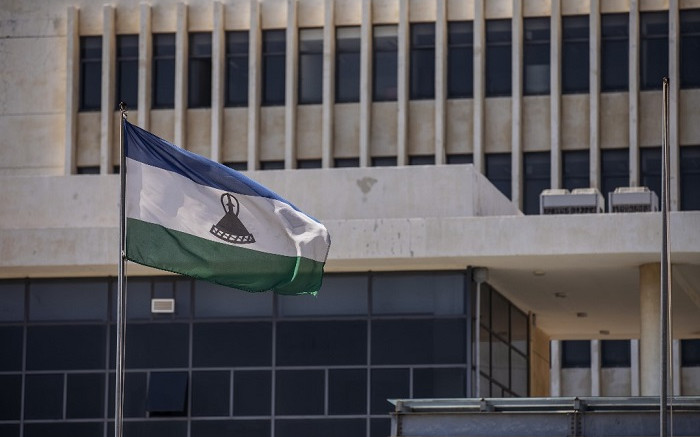
More on this story: Territorial claims by Lesotho’s opposition further post-apartheid tensions
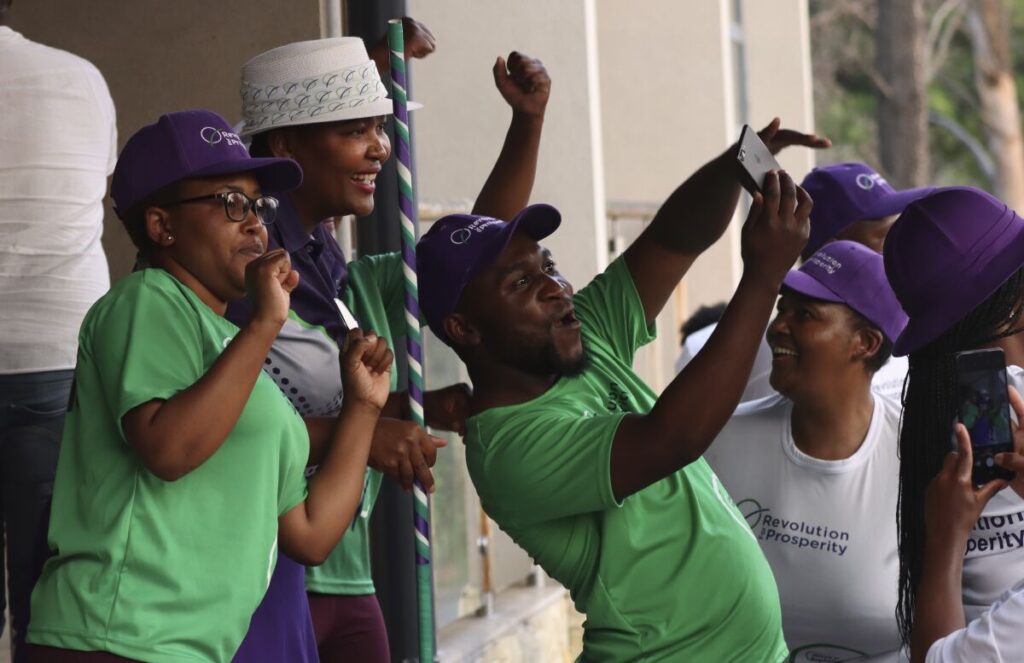
More on this story: Lesotho’s optimistic elections outcome amid doubts in effective corruption fight
